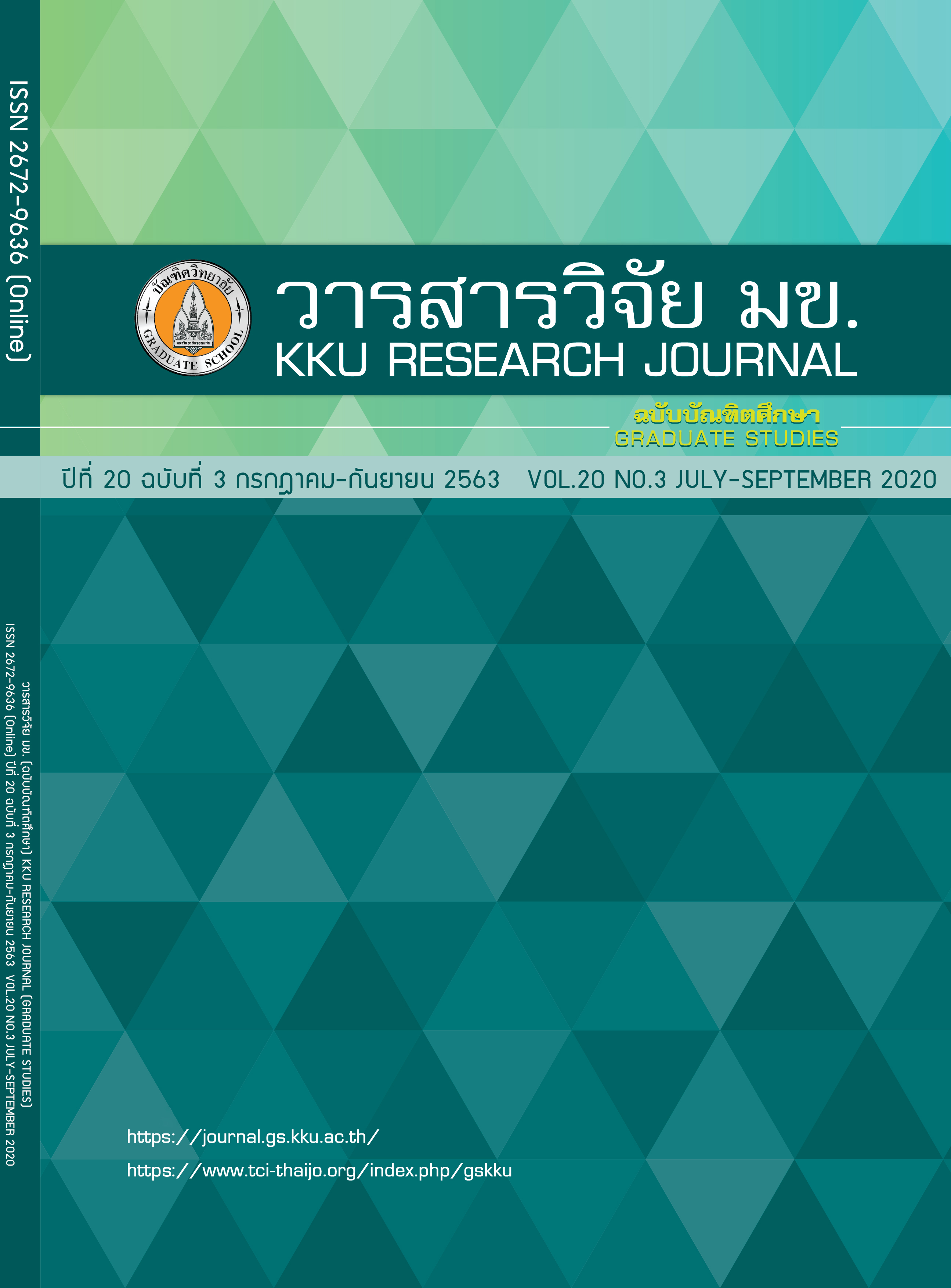Color Removal of Pulp and Paper Mill Industry by a Hybrid Coagulation and Adsorption Process
Keywords:
Coagulation process, Adsorption process, Fenton processAbstract
The aims of this research is to study the color removal efficiency of a hybrid coagulation and adsorption process for treatment of effluent from pulp and paper mill industry and to compare the operation cost with the Fenton process. The results showed the hybrid process has color removal efficiencies in range of 85-90% (color of treated water < 50 ADMI) with the operation cost of 6.78 Baht/m3. Fenton process can remove color in the effluent from pulp and paper less than 50 ADMI with the operation cost of 15 Baht/m3(including the chemicals for pH adjustment). Therefore, the hybrid coagulation and adsorption process is the most suitable color removal process for pulp and paper mill industry in terms of color removal efficiency and operation cost.
References
Ministerial Notifications on the requirements on the characteristic of discharge wastewater from pulp and paper industry, 2018. 135: 13-16 p. Thai.
Patel H. Charcoal as an adsorbent for textile wastewater treatment. Separation Science and Technology, 2018, 53(17): 2797-2812 p.
GilPavas EI, Dobrosz-Gómez, Gómez-García M.-Á. Optimization and toxicity assessment of a combined electrocoagulation, H2O2/Fe2+/UV and activated carbon adsorption for textile wastewater treatment. Science of The Total Environment, 2019. 651: 551-560 p.
Singhal A, Jha PK, Thakur IS. Biosorption of pulp and paper mill effluent by Emericella nidulans: isotherms, kinetics and mechanism. Desalination and Water Treatment, 2016. 57(47): 22413-22428 p.
Zahrim A, Nasimah A, Hilal N. Coagulation/flocculation of lignin aqueous solution in single stage mixing tank system: modeling and optimization by response surface methodology. Journal of Environmental Chemical Engineering, 2015. 3(3): 2145-2154 p.
Yimrattanabavorn J, et al. Combination coagulation and adsorption processes for treating textile wastewater in household industry. International journal of geomate, 2018. 15(51): 16-21 p.
Sharma R, Kumar S, Sharma C. Influence of operational parameters on electrocoagulation process in pulp and paper mill effluent treatment. Environmental Engineering and Management Journal, 2014. 13(2): 289-296 p.
Jang H-H, Seo G-T, Jeong D-W. Advanced Oxidation Processes and Nanofiltration to Reduce the Color and Chemical Oxygen Demand of Waste Soy Sauce. Sustainability, 2018. 10(8).
Khosravi M, et al. Membrane Process Design for the Reduction of Wastewater Color of the Mazandaran Pulp-Paper Industry, Iran. Water Resources Management, 2011. 25(12): 2989-3004 p.
Sakurai K, et al. Post-treatment of effluent from the pulp and paper industry using microfiltration and ultrafiltration membranes combined with the Photo-Fenton process. Scientia Forestalis, 2016. 44(112): 937-945 p.
Grötzner M, et al. Pulp and Paper Mill Effluent Treated by Combining Coagulation-Flocculation-Sedimentation and Fenton Processes. Water, Air, & Soil Pollution, 2018. 229(11): 364 p.
Munir HMS, et al. Removal of colour and COD from paper and pulp industry wastewater by ozone and combined ozone/UV process. Desalination and water treatment, 2019. 137: 154-161 p.



